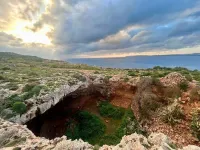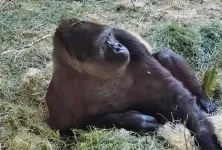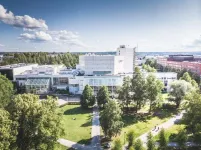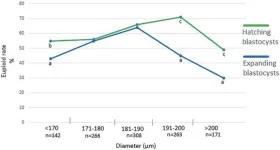(Press-News.org) Seafaring hunter-gatherers were accessing remote, small islands such as Malta thousands of years before the arrival of the first farmers, a new international study has found.
Published in Nature, the research team – led by Professor Eleanor Scerri of the Max Planck Institute of Geoanthropology (MPI-GEA) and the University of Malta – found hunter-gatherers were crossing at least 100km of open water to reach the Mediterranean island of Malta 8,500 years ago, a thousand years before the arrival of agricultural practises.
This report documented the oldest long-distance seafaring in the Mediterranean, before the invention of boats with sails – an astonishing feat for hunter-gatherers likely using simple dugout canoes.
At the cave site of Latnija in the northern Mellieħa region of Malta, the research team found the traces of humans in the form of their stone tools, hearths, and cooked food waste.
Small, remote islands were long thought to have been the last frontiers of pristine natural systems.
Humans were not thought to have been able to reach or inhabit these environments prior to the dawn of agriculture, and the technological shift that accompanied this transition.
“Even on the longest day of the year, these seafarers would have had over several hours of darkness in open water,” said Professor Nicholas Vella of the University of Malta, co-investigator of the study.
Dr Mathew Stewart, from Griffith University’s Australian Research Centre for Human Evolution, analysed the animal remains from this site as part of the study.
“At the site we recovered a diverse array of animals, including hundreds of remains of deer, birds, tortoises, and foxes.” Dr Stewart said.
“Some of these wild animals were long thought to have gone extinct by this point in time,” added Professor Scerri.
“They were hunting and cooking red deer alongside tortoises and birds, including some that were extremely large and extinct today.”
In addition to this, the team of researchers found clear evidence for the exploitation of marine resources.
“We found remains of seal, various fish, including grouper, and thousands of edible marine gastropods, crabs and sea urchins, all indisputably cooked,” said Dr James Blinkhorn of the University of Liverpool and MPI-GEA, one of the study’s corresponding authors.
“The incorporation of a diverse range of terrestrial and, especially, marine fauna into the diet likely enabled these hunter-gatherers to sustain themselves on an island as small as Malta,” added Dr Stewart.
These discoveries also raised questions about the extinction of endemic animals on Malta and other small and remote Mediterranean islands, and whether distant Mesolithic communities may have been linked through seafaring.
“The results add a thousand years to Maltese prehistory and force a re-evaluation of the seafaring abilities of Europe’s last hunter-gatherers, as well as their connections and ecosystem impacts,” Professor Scerri said.
The findings ‘Hunter-gatherer sea voyages extended to remotest Mediterranean islands’ have been published in Nature.
END
Longest known seafaring venture 8,500 years ago brings hunter-gatherers to Malta before early farmers
2025-04-09
ELSE PRESS RELEASES FROM THIS DATE:
How human cells repair damaged DNA
2025-04-09
The DNA of human cells consists of a sequence of about 3.1 billion building blocks. Cells go to great lengths to maintain the integrity of this vast store of information. They constantly untangle knots in the DNA strand and create new chemical bonds when a strand of DNA breaks somewhere in the nucleus.
“When people read about repairing genetic material, they often think of it being in response to exposure to toxins or radiation,” says Jacob Corn, Professor of Genome Biology at ETH Zurich. However, repair mechanisms not only defend against external threats; they also play a crucial role in helping cells survive the challenges they ...
Your skin is breathing. New wearable device can measure it.
2025-04-09
Northwestern University researchers have developed the first wearable device for measuring gases emitted from and absorbed by the skin.
By analyzing these gases, the device offers an entirely new way to assess skin health, including monitoring wounds, detecting skin infections, tracking hydration levels, quantifying exposure to harmful environmental chemicals and more.
The new technology comprises a collection of sensors that precisely measure changes in temperature, water vapor, carbon dioxide (CO2) and volatile organic compounds (VOCs), which each give valuable ...
Serendipitous discovery could lead to more efficient catalysts
2025-04-09
PULLMAN, Wash. – Preparing catalysts by sending hot, steamy car exhaust over them could improve their efficiency and reduce the amount of rare and expensive metals required in vehicle catalytic converters and many other emission control and industrial processes.
Reporting in the journal, Nature, an international team of researchers found that the hot car exhaust containing nitrogen oxides and carbon monoxide caused a previously unknown reaction that, used proactively, can significantly improve catalytic activity. Catalysts are substances that increase the rate of chemical reactions.
The researchers found that hot exhaust encouraged ceria particles, one of the components of the ...
Engineering smart delivery for gene editors
2025-04-09
Overcoming Delivery Challenges in Gene Editing
Modern genome editing techniques, including CRISPR systems, hold great potential for treating genetic diseases. However, delivering these molecular tools reliably to their target cells remains a significant challenge.
“Previous viral and non-viral delivery systems such as adeno-associated viruses (AAVs), lipid nanoparticles (LNPs), and other virus-like particles (VLPs), have been valuable but face limitations,” says Dr. Dong-Jiunn Jeffery Truong, last author ...
Six ape genomes sequenced telomere-to-telomere
2025-04-09
Comprehensive reference genomes have now been assembled for six ape species: siamang (a Southeast Asian gibbon), Sumatran orangutan, Bornean orangutan, gorilla, bonobo and chimpanzee. Areas of their genomes previously inaccessible because of structural complexity have now mostly been resolved.
The resource is already lending itself to comparative studies that offer new insights into human and ape evolution, and into what underlies the functional differences among these species.
A report on how the telomere-to-telomere ape genome references were developed, and what scientists are learning from it, appears in the April 9 edition ...
Hubble Space telescope unveils the first images of ongoing star cluster mergers near the center of dwarf galaxies
2025-04-09
A new study reports the first direct observation of merging star clusters in the nuclear region of dwarf galaxies. This detection confirms the feasibility of this formation route for nuclei in dwarf galaxies, which has long been debated. The study was published in Nature science journal, and led by Postdoctoral Researcher Mélina Poulain from the University of Oulu, Finland.
Dwarf galaxies are the most abundant type of galaxies that populate the Universe. Composed of 100 times fewer stars than the ...
‘Sugar’ signatures help identify and classify pancreatic cancer cell subtypes
2025-04-09
GRAND RAPIDS, Mich. (April 9, 2025) — Van Andel Institute scientists and collaborators have developed a new method for identifying and classifying pancreatic cancer cell subtypes based on sugars found on the outside of cancer cells.
These sugars, called glycans, help cells recognize and communicate with each other. They also act as a cellular “signature,” with each subtype of pancreatic cancer cell possessing a different composition of glycans.
The new method, multiplexed glycan immunofluorescence, combines ...
Every cloud has a silver lining: DeepSeek’s light through acute respiratory distress syndrome shadows
2025-04-09
Acute respiratory distress syndrome (ARDS) continues to be a tough nut to crack in critical care, taking lives despite years of research and better ventilator strategies. It is defined by acute hypoxemia, bilateral infiltrates on chest imaging, and non-cardiogenic pulmonary edema, and it remains a heterogeneous condition with mortality rates stubbornly close to 40%. Its complexity—spanning diverse etiologies, inflammatory profiles, and therapeutic responses—demands innovative solutions beyond traditional paradigms. In recent years, artificial intelligence ...
Scientific Program announced for inaugural eLTER Science Conference in Finland
2025-04-09
The scientific programme for the inaugural eLTER Science Conference has just been launched, marking a major milestone in the lead-up to the event. Held from 23 to 27 June 2025 in Tampere, Finland, the conference will explore integrated, policy-relevant approaches to ecosystem and socio-ecological research under the theme: “Toward a whole-system approach to ecosystem science.”
Organised by the Integrated European Long-Term Ecosystem, critical zone and socio-ecological systems Research Infrastructure (eLTER RI), the event is expected to welcome over 300 participants from across Europe and beyond.
The scientific programme features:
25 keynote speakers recognised for their leadership ...
Does blastocyst size matter? Exploring reproductive aging and genetic testing
2025-04-09
“[…] when selecting non-PGT-A tested embryos for embryo transfer (ET) or frozen embryo transfer (FET), a small hatching blastocyst seems to be a better choice than a large expanded one, especially for advanced-age patients for whom the risk of aneuploidy is higher.”
BUFFALO, NY — April 9, 2025 — A new research paper was published in Aging (Aging-US) Volume 17, Issue 3, on March 5, 2025, titled “Reproductive aging, preimplantation genetic testing for aneuploidy, and the diameter of blastocysts: does size matter?”
In this study, a team led by first author Jakub Wyroba from the Malopolski Institute of Fertility Diagnostics ...







